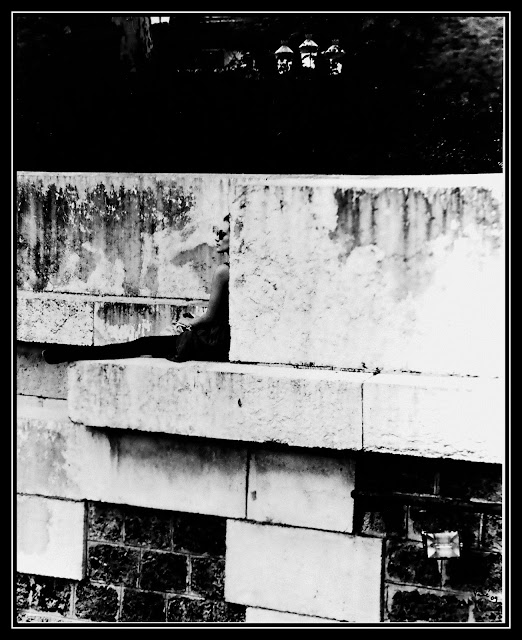Sometimes living in the high desert of Arizona makes me miss large bodies of water. And, as a street photographer, over the years two rivers in Europe have provided me with ample opportunity to capture moments that have special meaning because of the historical and contemporary meaning the Seine and the Danube have in Western Europe.
So, on a day when all is dry around me, I looked for a few photos from France and Vienna.
Paris
The photo atop this page was a challenge of film photography. I was using 100 ASA film and the sun had set almost an hour ago. The lens on my Yashica 124 TLR camera has a maximum of 3.5 which is not suited for photography in the dark! But the couple embracing on the public bench and the Tour Eiffel in the back made me try a slow shutter speed of 1/8th second, handheld!
It took a number of attempts to print it in my darkroom, and then when digitally scanning it but gives me a secret view of the crépuscule (twilight) near the Seine.
This next photo, one of my favorites, I took at around sunset with a Mamiya 645 medium format camera. There was enough light for the superb Mamiya Sekor 90mm lens opened wide to 1.9. The texture and the tonal range came out beautifully using an Ilford Delta 100 film.
Another published favorite is that of two young women on the wall next to the Seine. The Beret and the pigeon (which just flew into the frame…) make this photo immediately recognizable to represent a Parisian moment.
Only à Paris…
Vienna
On this trip I wanted to capture the street artistic character of the long walkways on both sides of the Danube.
While the Blue Danube is the most popular waltz by Johann Strauss II, I feel comfortable saying that the Danube has never been blue in modern times. I have walked the promenade on the shore of the Danube in Vienna many times in the past 50 years, and have never seen that river blue. And the walls around that walkway are not pristine in shape or colour. And that for me is a character I cherish as a photographer.
So, on this trip I looked for that reality of shape, colour and texture that represents the Danube for me.
This photo is about wall art and street sculpture on the west promenade (the Danube runs at the right of this photo). The sculpted dead tree is a humanoid presence and the paintings on the walls will exist till they are cleaned and replaced by new phantasmagorical paintings. So, what I captured at that moment does not exist anymore. It is history. Although the paintings are often in vivid spray paint colours, I think the general mood of the walk is best represented in shades of gray.
This second photo is my favorite from that trip as it is a true street photography. Steel, water, sharp edges, an old bridge and a pensive man as if admiring his reflection in the Danube. Or his sorrows. And then, a classically dressed woman showing timeless style amid a historic setting. Finally, in the upper quadrant a man leaving the scene. For me, this is a photo of cosmopolitan life but without crowds rushing along. It is also all texture and Fujifilm Neopan Across film did capture the autumnal early morning on the shores of the Danube.
Finally, I shot from the west promenade capturing the recent times of massive immigration throughout Europe. It is a socio-political statement next to the flowing river. It represents the times and issues that old river has seen more than once, when it was once blue and now that it runs in more subdued colours.
November 19, 2021
© Vahé A. Kazandjian, 2021









